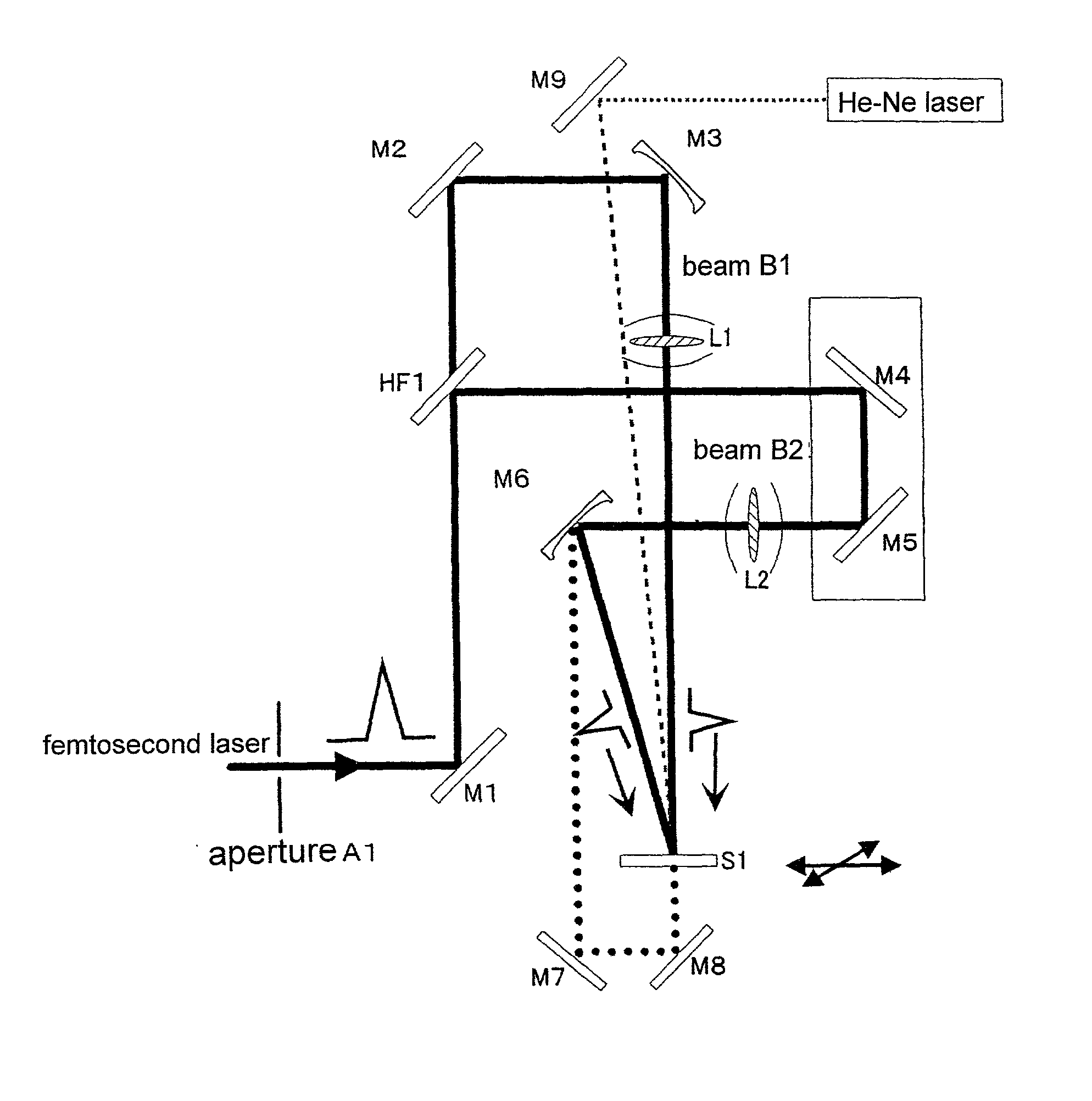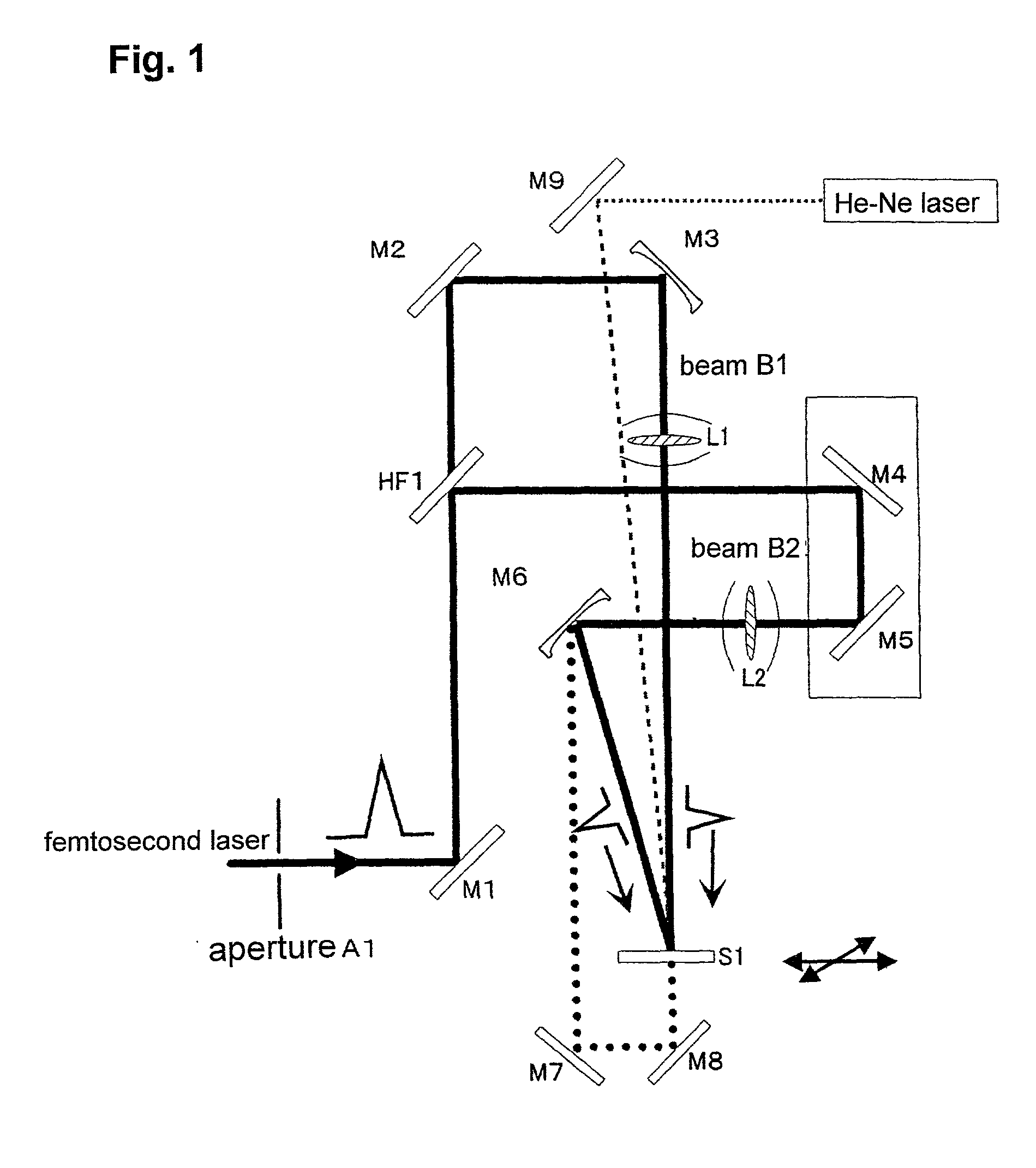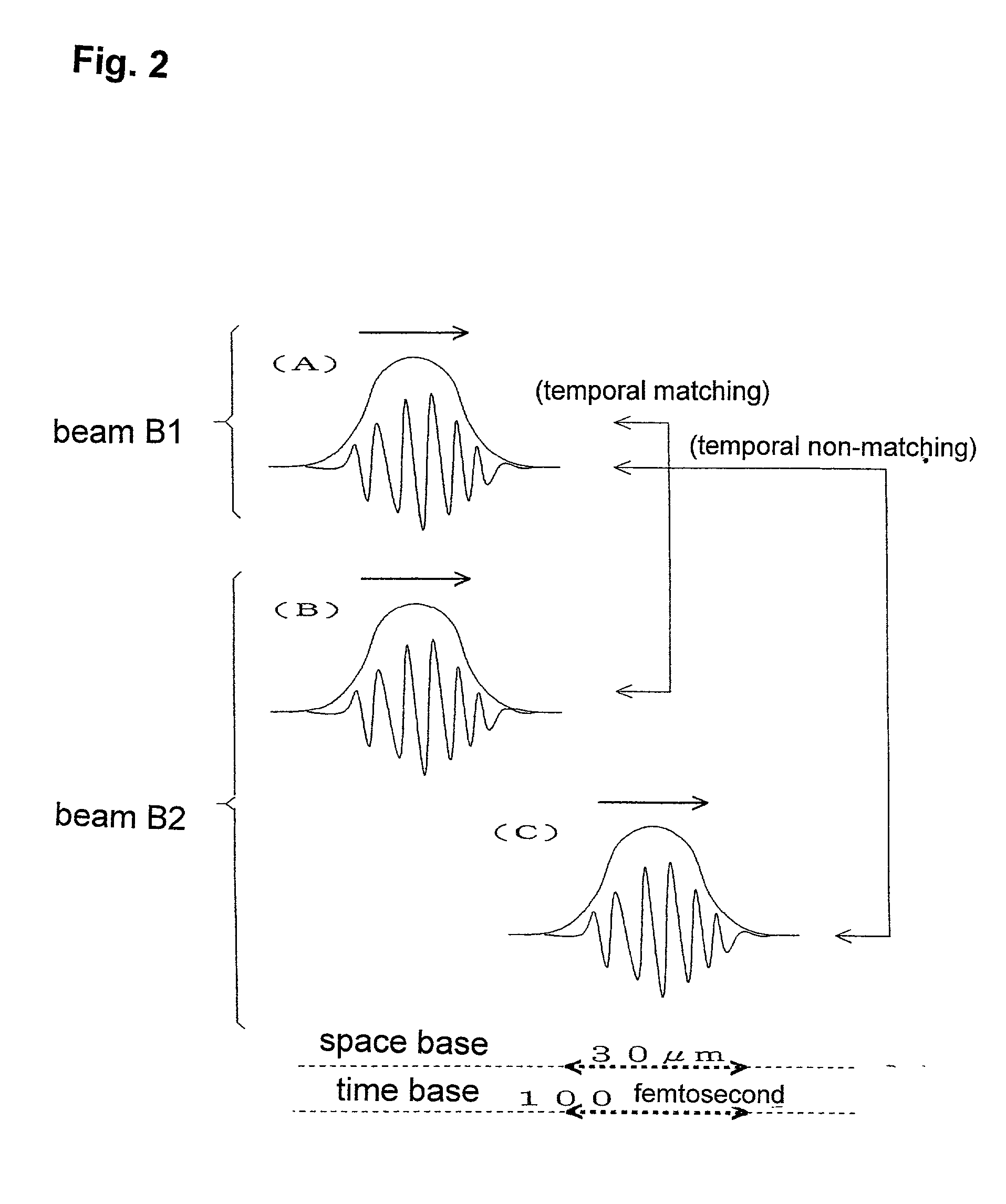Production method and device for hologram
a production method and hologram technology, applied in the field of holograms, can solve the problem of no report on the development of the two-beam exposure apparatus, and achieve the effect of improving the interference between the two beams
- Summary
- Abstract
- Description
- Claims
- Application Information
AI Technical Summary
Benefits of technology
Problems solved by technology
Method used
Image
Examples
example
Example 1
[0056] Using the two-beam laser interference exposure optical system, a transmission type hologram was recorded in ambient air. A combination of the plane mirror M3' and lens L1 and a combination of the plane mirror M6' and lens L2 were used. A single crystal of sapphire (10.times.10.times.1 mm) was used as the substrate S1 for recording a hologram therein. A laser beam was entered perpendicular to the "c plane" of the sapphire single crystal. The pulse energies of the beam B1 and beam B2 were arranged in 0.7 mJ and 0.3 mJ, respectively, and thus the laser output was about 1 mj / pulse. Using a singe pulse, a hologram was recorded by converging each of the beams with a spot size of about 10 .mu.m diameter. Further, in order to bring the laser beam into a Gaussian distribution through a shaping process, an aperture control element A1 was inserted in the optical path. As a result, the energy of the beams B1 and B2 necessary for recording a hologram could be reduced by 20%.
[0057...
example 2
[0059] Using the same two-beam laser interference exposure optical system as that of Example 1, a surface relief type hologram was recorded in a metallic film. In order to bring the laser beam into a Gaussian distribution through a shaping process, an aperture control element A1 was inserted in the optical path. A metallic film formed on a glass through a vacuum deposition process and having a thickness of about 250 nm was used as the substrate for recording a hologram therein. After the shaping process, the pulse energies of the beams B1 and B2 were 0.13 mj and 0.07 mj, respectively. The angle .theta. between the two beams was 20 degrees. The fringe distance of the obtained diffraction grating could correspond to a value derived from the following formula by using a laser wavelength .lambda.=800 nm and an air which gives n=1;
.lambda.=n.multidot.d.multidot.sin .theta. / 2
example 3
[0060] Using the same two-beam laser interference exposure optical system as that of Example 1, a surface relief type hologram was recorded in a silica film. A SiO.sub.2 thin film (film thickness: 114 nm) formed on a Si single crystal through a thermal oxidization was used as the substrate. The energy intensity of each of the beams B1 and B2 was 25 .mu.j, and the beams B1 and B2 were converged with a diameter of about 100 .mu.m on the surface. The angle between the two beams was 90 degrees, and a calculated fringe distance of the obtained diffraction grating was 580 nm.
[0061] FIG. 7 shows an AFM image of the obtained diffraction grating. From this AFM image, it could be confirmed that a surface relief type hologram having a groove depth of 2 to 3 nm and a groove distance of 580 nm was formed. The groove depth was 2 to 3% of the film thickness of the silica glass, and this value could correspond to a shrinkage percentage in connection with an optically induced structural change in th...
PUM
 Login to View More
Login to View More Abstract
Description
Claims
Application Information
 Login to View More
Login to View More - R&D
- Intellectual Property
- Life Sciences
- Materials
- Tech Scout
- Unparalleled Data Quality
- Higher Quality Content
- 60% Fewer Hallucinations
Browse by: Latest US Patents, China's latest patents, Technical Efficacy Thesaurus, Application Domain, Technology Topic, Popular Technical Reports.
© 2025 PatSnap. All rights reserved.Legal|Privacy policy|Modern Slavery Act Transparency Statement|Sitemap|About US| Contact US: help@patsnap.com



